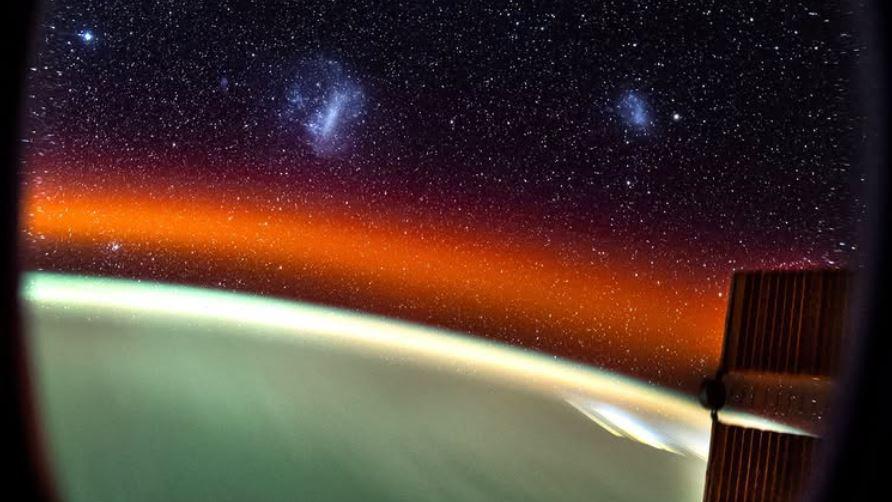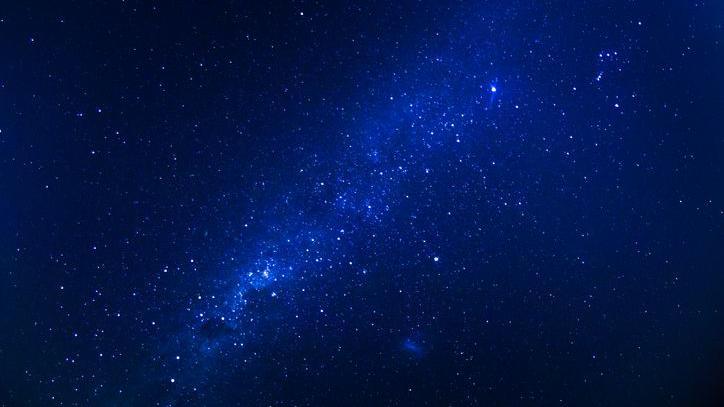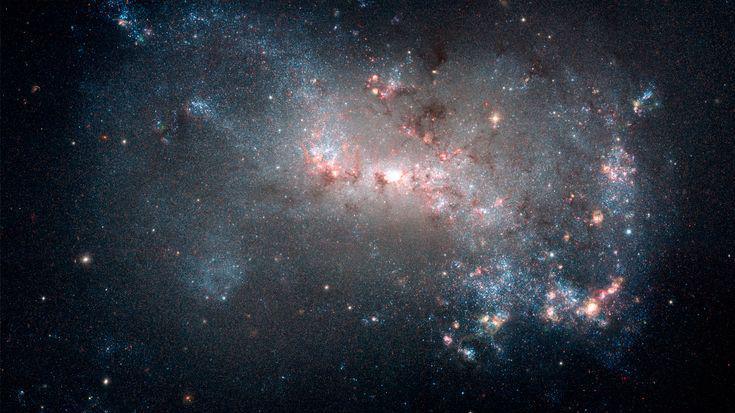Astronaut snaps picture of dwarf galaxies from the ISS

- Published
Being an astronaut in space comes with many perks - one of which is being able to see amazing views that no one on Earth can.
Nasa Flight Engineer Don Pettit decided to make the most of this, and took this picture from the window of the International Space Station (ISS).
It shows the view of the sky from the Southern Hemisphere.
In it, you can see thousands of stars as well as two nearby dwarf galaxies - known as the Large and Small Magellanic Clouds.
More space news
Nasa delays Artemis moon mission again
- Published6 December 2024
Nasa says Voyager 1 spacecraft working normally again
- Published5 December 2024
New satellites to create on-demand total solar eclipses
- Published2 December 2024
What happened?

Nasa astronaut Don Pettit is currently on a six month mission on board the ISS, where he's helping to carry out science experiments and look after the maintenance of the space station.
He's also an astrophotographer, who has been known to take plenty of stunning pictures during his time in space.
Earlier this month, he shared a photo which shows thousands of stars and two dwarf galaxies, with the caption "In space, you can see stars!".
Some people think that it's difficult to spot stars in space - but this isn't true.
In reality, you can see a lot more stars in space than from the ground on Earth as you don't have the issues of light pollution or the Earth's atmosphere in space.
Pettit's photo shows the Large Magellanic Cloud and the Small Magellanic Cloud - which are two dwarf galaxies that are close to the Milky Way.
In fact, they're so close to our galaxy, that it's easy to see individual stars within them.
What are dwarf galaxies?

Nasa describes dwarf galaxies as small, faint collections of stars and gas.
They are made up of a few billion stars - compared to larger galaxies, which can contain hundreds of billions of stars.
The Milky Way, for example, is thought to be made up of around 100 billion stars - whereas the Magellanic Clouds contain around 33 billion stars.
Dwarf galaxies are the most common type of galaxy in the universe but can be difficult to spot due to their small size and low mass.
